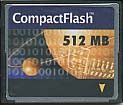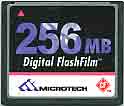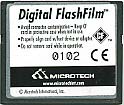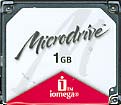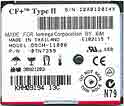Home Search Gallery How-To Books Links Workshops About Contact
CF Cards I get my goodies
at Ritz, Amazon, and Adorama. It helps me See also my CF and SD memory card speed tests and my SanDisk Extreme IV Test. INTRODUCTION Prices fall and capacity increases every week. This page will always be a little behind. November, 2006: I use a couple of SanDisk Extreme III 2GB CF cards I got here, and a SanDisk Extreme III 2GB SD card I got here. With the exception of the SanDisk Extreme IV which only comes in CF, these SanDiskExtreme III cards are the best I can get. Slower cards, like the SanDisk Ultra II or unmarked Sandisk blue, would probably work just as well, but I don't mind spending the extra $20 not to worry and to get the fastest possible download speeds. Nikon publishes lists of memory cards approved, guaranteed and recommended for each camera. See the CF list here and the SD list here. Stick with these and you know it will work perfectly on your Nikon. January 2006: I ordered a SanDisk Extreme III 2GB CF card here and it came in a few days. I didn't need anything bigger than my 1GB 40x Lexar, but I wanted to see if a hotter card would speed up the playback of my D200. It's a little faster on playback, but not life-changing. The SanDisk Extreme III is probably the hottest card out there today. I'm more concerned with playback and transfer speed than write speed. DSLRs buffer the writing so write speed isn't an issue unless you're shooting raw at 5 FPS. I post some results with my other cards on my D200 High Speed Performance page and will post the results from my new card, too. Unlike photographers you see in ads I actually buy my cards myself. December 2005: the most popular Compact Flash card is the Lexar 1GB 80x you can get here or here for about $100. The most popular SD card is the SanDisk SDSDH-1024-901 1 GB Ultra II Secure Digital Memory Card you can get here or here for about $90. There often are rebates on these. The Lexar 512MB CF cards are also great for about $45 here or here. WHAT YOU NEED Typically you'll just need one card unless you want to shoot for weeks without downloading or shoot RAW. Prices drop every month so only buy what you need now. You see my latest suggestions at the top of the page. I always download and backup my shots everyday, then reformat the card in my camera. I do not shoot for days or do partial downloads. Everytime you connect a card to another computer or different camera you run a risk of recombobulating something which may lead to a problem. I rarely need more than a single one gig card for a day of shooting. It's a bad idea to get a multi-gig card with the expectation of keeping many days of work on it if you're doing partial downloads. Card speed isn't much of an issue. I've never worried about it. Cards up to 2 GB are fine, but 4 GB cards are slower, and the newest 8 GB cards are slower still. DETAILS If you want to read a page of details, here goes: You'll need about a gig or two of memory if you shoot as I do each day. If you're shooting with a compact digital camera that makes you wait while images are written to the card then speed ratings matter. On SLRs like the D200, 20D and D70 it doesn't matter much, since these cameras buffer most of the images and write them to the card without slowing you down. Other compact cameras and most DSLRs buffer the data written to the card, so speed ratings are unimportant. The camera works fine taking new photos while the card is written to from the buffer. You don't have to wait for the photos to be written before taking a new photo. With these cameras the only reason to be concerned is if you are a sports shooter and might fill up the buffer before it can all be written to the card. Buffers usually hold at least several frames, and as many as 40 frames in some DSLRs. I've never been able to fill up a buffer with JPG images. If you shoot less, then maybe one 512MB card will be plenty. The little card that may have come with your camera probably only holds about 8 photos so you can throw it away. Better digital cameras don't even include a card when you buy them. You can either buy a few small cards, one big one, or one microdrive. Don't worry about the exact amount of memory since this will become clear as you use the camera. You need enough cards to hold all you shoot before you copy the data to your computer and back it up on CD or external hard drives. Once you've copied and backed up the data it's safe to reformat your cards. Thus you need more memory if you shoot more or take longer to back up your data, and less if you shoot less or back up more often. I got along fine with just one 256MB card when I first got my D1H in 2002, and today I can fill a 2GB card in less than a day. Everyone is different. More megapixels and more shooting means you need a bigger card. It usually costs less to buy more smaller cards or a microdrive than one big CF card. Back in 2002 the IBM Microdrives cost less and were more reliable than flash cards. In 2006 I prefer CF cards. Luckily you can ignore the speed ratings so long as you have a camera with buffering, which all the decent ones I recommend do. You will need some way to read these cards. I used to use an external reader with older cameras. Today the latest cameras read the card so fast I just plug my D200 into my Mac. My D70 is so slow I use a card reader. If you have a laptop with a PCMCIA slot you can use an adapter like this one here. It pops in the slot and you pop your cards into the side of your laptop. I'd do this if my laptop had a PCMCIA slot. More about readers below. CARD ADAPTERS You can get an adapter here that lets you use smaller SD, SM, MMC, MS and MS Pro memory cards in a CF slot. I haven't tried it; I just use standard CF cards. ABUSE CF Cards Try to keep the multipin socket of these cards clean. That's it for CF card care; just keep them in those little plastic boxes while in your pocket. Microdrives Don't drop the microdrive. Don't stand the microdrive on its edge so it can flip over. I'm serious about this one. It's really bad for the heads (even parked) to smack it with G forces normal to the platter. Therefore don't plop the microdrive down flat on a table. Treat it daintily when it's not in the camera. Don't let your kids hold a magnet up to a microdrive or stick it in the microwave or the bathtub. I have removed and inserted my microdrive while my D1H power was on. No problems, then again, this was not while it was trying to read or write to the card. That was a no no. When it is in the camera don't worry about it. A D1 series will dent your table before you could damage a drive that's idle. SPEED All the cards and even the microdrives, regardless of marked speed, run at about the same speed in a digital SLR. The biggest differences are in playback speed. The manufacturers' speed ratings only apply to WRITE speed, which is irrelevant in a DSLR. The READ speed is the same on all the cards anyway for all practical purposes. Yes, you and I both have seen the sites written by people who whip out stopwatches and time all this. Note that all the figures are with 20% of each other, so who cares how long the green light stays on when you don't have to wait for it? In other words, on a real camera I wouldn't pay more for a speed rated card. HOW MANY PICTURES FIT ON A CARD This is easy. Divide the capacity of the card by the file size of your images. A 2GB (2,048 MB) card with 2.5 MB JPG Normal images from my D200 ought to get 800 shots. (2,048 MB / 2.5 MB = 800) I use JPG Basic, optimal quality, which are 1.75 MB files or 1,200 shots on a card. Nikon DSLRs often have design flaws which underestimate the number of shots remaining. A 256MB card and 730kB normal JPEG from the D1, D1H and D1X in medium resolution: 256 Megs / 730k = 256 Megs / 0.74 Megs = about 350 snaps. You also can look in your camera's instruction book for this. Get an external card reader unless your camera is new enough to download photos fast. I can download a couple of hundred MB of images in a minute from my D200, so I use no card reader. My D70 takes 10 minutes to do the same, so I use a card reader with it. If you have a laptop with a PCMCIA slot (most do), get an adapter that allows you to insert the cards into that slot like this one here. RECOMMENDATIONS (as of February 2006) Get a SanDisk Extreme III 2GB CF card here. It's the best value compared to smaller or larger cards. For $110 I see no reason to get anything cheaper. The Extreme III is the best they make, and better than the Ultra II my best friend Karl is seen in San Disk's ads advertising. You can see the current lineup at Adorama as it updates here. I buy my cards from Amazon or Adorama. I use only name brands suggested by Nikon, which as of 2006 are SanDisk and Lexar. I don't suggest any of the discount cards like Kingston, Ridata or Jizmo. Sure they cost less than the good cards and have the same or better published specs. As soon as you too lose some data you'll kick yourself for getting cheap. I used to work in the chip business and yes, some people lie about their specs. Here are the links. I wouldn't worry about the speeds, I'd buy whatever's cheapest within a class. Sometimes the faster cards are less expensive, and slower cards usually work as well in DSLRs. These all change faster than I can update the site; you can see the available lineup as it updates here. 4 GB Lexar
4GB 80X about $400. Unknown if CF type I (thin) or II (fat). 2 GB Lexar 2GB 80x about $85 after rebate 1 GB Lexar
1GB 80x (also get it here)
about $100 RECOMMENDED 512 MB Lexar 512MB 80x (also get it here) about $65 Lexar
512MB 40x (also get it here)
about $60 256 MB Lexar
256MB 40x also get it here
about $38 Microdrive Some people are buying MP3 players for about $200 which contains a 4GB Hitachi microdrive. They rip out the drive and throw away the player, since the player with the drive costs half what the drive alone sells for at retail. Read about that here. I have not tried this, as I said 4GB is too large for the uses I have, since I try not to put too much live, unbacked-up data in any one place. Others have told me that Hitachi now deliberately makes microdrives for the MP3 players that won't work in cameras. I don't know. HISTORY FROM 2002: DATA LOSS and COMPATIBILITY Luckily with my D70 I've made 40,000 shots on my Lexar cards and never had a single problem. As of 2005 I've not heard of any camera/card compatibility problems. I've made 10,000 shots on my D200 and also no problems. In 2002 things were tougher. Thankfully they've improved. My D1H and no-brand cards lost days of work due to mysterious compatibility problems between flash cards, cameras and readers. Sticking with name brands I've not had any problems since 2003. Nikon tests and recommends cards for each camera. For instance, here's the list for the D1H and here's the list for the rest of the cameras. Avoid discount brands if your photos are important to you. Back in 2002 I cautioned about the following. Today in 2006 I have not heard of any of these problems. 1.) Will it work in your camera in the first place? If you're going to have a problem, the best thing that can happen is that a card simply won't work in your camera at all, like this awful one sold to a friend by BananaPC.com in 2002:
This CF card was bought by my pal Steve Cirone who thought he was getting a deal on a 512MB CF card for $180 in July 2002. The dealer claimed this thing is made by Samsung, and you'll note that the manufacturer made sure that their name is nowhere on the card. Steve got screwed. See how he felt here (caution, strong language). He was expecting his new Canon D60 (ordered online) to show up the same day as his card. Wrong. The Canon D60 was on 2-3 month backorder, although his card showed up the next day. Steve waited a few weeks and still no camera. Just for fun we figured we'd try the card in our cameras, and discovered that this card did not work in my Nikon D1H or other people's Canon D60 or D30 or ELPH or G2. We then did some Internet research, and discovered that this Samsung card does not work in ANY Canon camera. We did get it to work in a Nikon D1X and that was it. All these cameras work great with the other cards and Microdrives, we even have a networking and computer expert on staff who could not get the Samsung card to work with any amount of expert fiddling. Even if our resident guru could get it to go, would you still really want to use it without a full time hacker on staff to get it to work for you next time? Steve tried to return this obviously unfit card to BananaPC.com, and since his 14 day return period had passed BananaPC.com told him to get lost, even though the merchandise is clearly unsuited for the purpose for which it was sold. Did Steve get a bargain for $180 for a card that no one can use for anything? If he had bought from a reputable dealer like Amazon or he would have had a full 30 days to send it back, and would not have been stuck after 3 weeks as he is now. I hope this brings home the fact that cheap cards are just cheap; they are not good deals and waste more of your time than you think. This card compatibility issue was typical in 2002, but thankfully not in 2006. 2.) Will it lose data, even if it does usually work in your camera?
The worst thing that happens is that you get a card like the Microtech 256MB card I used in 2002 and it screws up only every once in a while. It works OK and you start to trust it, and then one day it just goes belly up after a few hours of shooting and you lose a few hours worth of work. This card may work just great in your camera; it just is not completely reliable in mine. Serves me right, it was NOT on the approved list from Nikon. Honestly, this is different from camera to camera. All because this card is unreliable in my camera does not mean it's a bad card; it's just a bad card for me. Cards that may work great for me may be awful for you: this is all unpredictable. Microtech was good enough to replace the card, but the same problem still happens for me. I'm out of luck; this is a design flaw. Note that Nikon DOES NOT have Microtech on their list of compatible cards for the D1 series. When I have had these problems the Microtech card would cause my D1H to hang up and work slowly as I reviewed the images. Either the problem would go away, or the card might become unreadable and therefore lose all the photos I just made. That's bad, since I make all the photos and expect to be able to get them later. On the other hand, this Microtech card might work great in another camera, while cards that work in my camera might not work the other cameras. This all gets pretty screwy, so if something doesn't work just return it immediately and don't worry about why. All because this card is flaky for me for all you know it might be the very best thing there is in your camera and vice versa. Remember that in spite of all the claims about how physically tough the CF cards are that the data itself is very delicate. Until you get the images off the card presume that you just might never see the images. 3.) What happens when a card loses data before you can download your photos? Your images are lost forever. Poof, gone in a blink of an eye never to be seen again. You can try: Data Recovery People with too much time on their hands download forensic software to allow pulling data off reticent cards. I tried this once and it worked! When I do lose data I just reformat the card in the camera and I'm back to where I started: the camera and card work, but no more images. Lexar offers free data recovery from their cards if one screws up. This factor alone is why I wouldn't buy anything but Lexar cards at this point. You can hire people at great expense to do this for you if you're stuck with a dead card by another maker (like I was). Other people I know have sweet talked other makers into recovering data anyway. It's not difficult to do once you go find the right software and do it once. I'd rather be making photos. The MICRODRIVE
Mine works great. It takes a second or so to wake up and playback, which bugs me. I've had no problems with my 1GB IBM. I have only seen one weird problem in 2002 where one image refused to write to the drive. The Nikon D1H just sat there and blinked its access light. Unfortunately it did not give up, which pretty much hung up my camera until I yanked out the battery pack. The CF light stayed on even if I turned off the camera power switch. Luckily after yanking out the battery and putting it back in everything was fine, although that one image was lost. The camera says something like "File does not contain image data" and creates a new folder. Just delete the cranky file; that was the image that your camera could not write completely. You lose that one image and at least you know it. This is OK, since I can redo that image right there. Nikon told me this was normal now and then with the microdrives on the D1 series. It beats loosing a whole card after a shoot! The word of mouth is that Microdrives are great in a studio and below 9,000 feet of altitude. They are supposedly less recommended if you are running around a sideline while your camera is still writing images. Only a pro working for a newspaper with a loan pool camera treats his gear poorly enough to worry about this, you won't dare beat up your $4,000 camera enough to bother the drive, especially when you realize how secure it is inside that hulk of a Nikon D1 body. The speed for writing (making or recording) images on the D1 series is identical to the solid-state cards. This is expected, since the camera just does all this on its own time. You can fire away as fast as you can and the microdrive will not ever slow you down, at least on the D1H's insane 40 frame buffer. On the other hand, every time after the screen goes black and you want to see some images on the D1H and D1X you have to wait 4 seconds for the drive to spin back up after pressing the MONITOR button. This is the only drawback of the microdrive; 4 seconds is forever in the digital age. Once it wakes up and before it goes to sleep you can blast through all the images just as fast as with the CF cards. With a CF card the monitor pops back on immediately after pressing MONITOR. Good luck! Ken |




